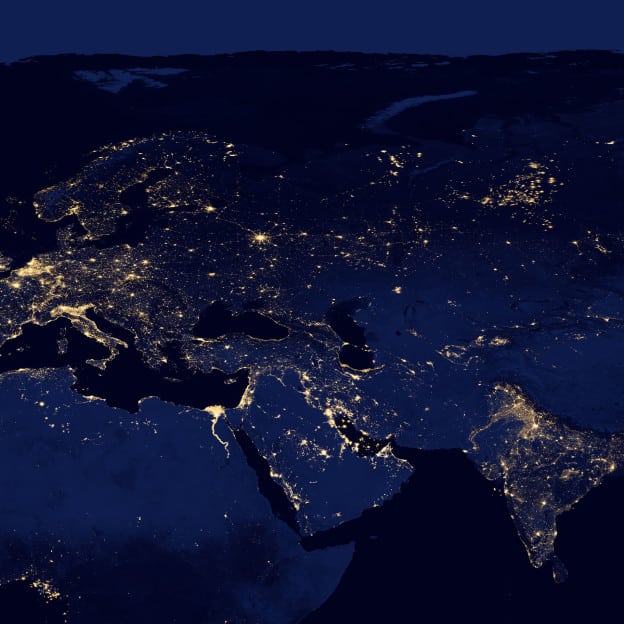UK Developing Digital Twin to Better Understand Future Energy Systems

The UK will back a digital twin" of future multi-vector energy systems, including non-electric ones, that will support the country's efforts to meet its 2050 net-zero objectives. The UK's effort echoes several initiatives launched worldwide to deliver new visibility, knowledge, and understanding of future energy systems and integrate real-time modeling.
UK transmission and distribution grid operator SP Energy and the University of Strathclyde are leading the ENSIGN: Energy System Digital Twin," a four-year project that will create an integrated energy system digital twin" (IES-DT) powered by artificial intelligence and machine learning.
Achieving a net zero energy system is a complex and challenging task, involving integrating a variety of renewable energy sources, decarbonized loads, and non-electrical energy vectors-such as wind, solar, tidal, geothermal, hydrogen, plus electrified transport and heating-into an integrated system that is reliable, resilient and affordable," the University of Strathclyde noted in a statement sent to POWER.
The entity defines digital twins as virtual representations of physical systems and environments which allow engineers and scientists to model, test and analyze scenarios before applying them in the real world, and to also make decisions in real-time based on observed and anticipated behavior informed by the twin." Digital twins will play a key role in designing and operating such future energy systems," it added.
Multiple ParticipantsSP Energy Networks operates grids throughout Central and Southern Scotland, North Wales, and Merseyside, Cheshire, and North Shropshire in England. The University of Strathclyde is an international technological university based in the center of Glasgow. Project partners also include the University of Glasgow, the University of St Andrews and Heriot-Watt University, UK Power Networks, D'Arcy Thompson Simulator Centre, National Grid Electricity Transmission, and the National HVDC Centre.
The project is part of the UK's Prosperity Partnerships," initiative, an April 2021-launched industry partnership to develop innovations in support of the UK's key priorities, including climate change. The ENSIGN project is one of 19 projects which have received a total of 149 million ($200 million) from the UK's Engineering and Physical Science Research Council (EPSRC) Prosperity Partnerships initiative. The University of Strathclyde said ENSIGN has so far received funding of almost 10 million ($13.1 million) in industry and government funding.
SP Energy is notably the first energy entity to receive EPSRC funding for digital twin development of this type. SP Energy Networks is focusing on reducing costs, improving network resilience, and enhancing strategic planning," the company said. It added that research findings from the project will be made available to distribution network operators and their supply chains across the UK and further afield."
The pace of change in the energy industry is like nothing we've ever seen so it's vital we can stress-test tech and services before they launch publicly," noted Scott Mathieson, Network Planning and Regulation director at SP Energy Networks. This new digital twin' will allow us to simulate innovations and understand the potential benefits of new services."
An Emerging Landscape of National Digital Twin EffortsAs experts have told POWER, perceptions of what constitutes a digital twin" vary widely. Within the global power sector, these digital replicas of a complex system (whether existing or of a future installation) can be static, consulting an unchanging data repository, or dynamic, where data is collected in real-time using sensors on the physical installation. However, a digital twin can also be used to analyze a simulated system, allowing for the creation of multiple scenarios to better inform operating dynamics.
The UK project, for example, will deliver understanding, knowledge, visibility, and applications that are urgently required to facilitate accurate and informed decision-making, risk management, and functions required for effective design and operation of future multi-vector energy systems," said University of Strathclyde Professor Campbell Booth. It will be used by future system operators to balance supply and demand in a very different future energy system context."
While the concept of a network digital twin is not new, they have mostly been deployed to visualize operations in real time. Digital technology vendors like GE Digital, for example, have for years used a combination of operational data to help grid operators create network digital twins, providing a connected view of the end-to-end network of assets, based on real operational data."
Electric utilities like Brazil's Eletrobras have already developed digital twins that leverage reality capture and help inform planning, operations, and construction projects. Eletrobras uses GeoPortal, a tool that has been useful in communicating environmental risks and incidents with transmission lines.
Wider efforts to create digital twins of electricity grids to drive and coordinate investments in the digitalization of electricity infrastructure, however, are notable.
In Uzbekistan, for example, UzAssystem-a joint venture between the Central Asian nation's government and French engineering firm Assystem-is developing a digital twin to model the country's grid. UzAssystem is also supporting efforts to develop a digital twin of neighboring Kyrgyzstan's grid.
In December 2022, the European Network of Transmission System Operators for Electricity (ENTSO-E) and the association of European distribution system operators (EU DSO Entity) declared their intent to develop a digital twin of the European electricity grid. Along with facilitating observability and controllability, the effort will foster simulations to support active system management and forecasting.
In parallel, and liaising with regulatory authorities, it will provide guidance and support for network operators on sustainable and cost-effective smart investments by the development of a tailored set of Smart Grid Indicators' (SGI)," noted ENTSO-E. These SGIs will help to foster investments in smartening the grid for enhanced capacity and flexibility, geared to empowering consumers to take part in energy transition."
-Sonal Patelis a POWER senior associate editor (@sonalcpatel,@POWERmagazine).
The post UK Developing Digital Twin to Better Understand Future Energy Systems appeared first on POWER Magazine.